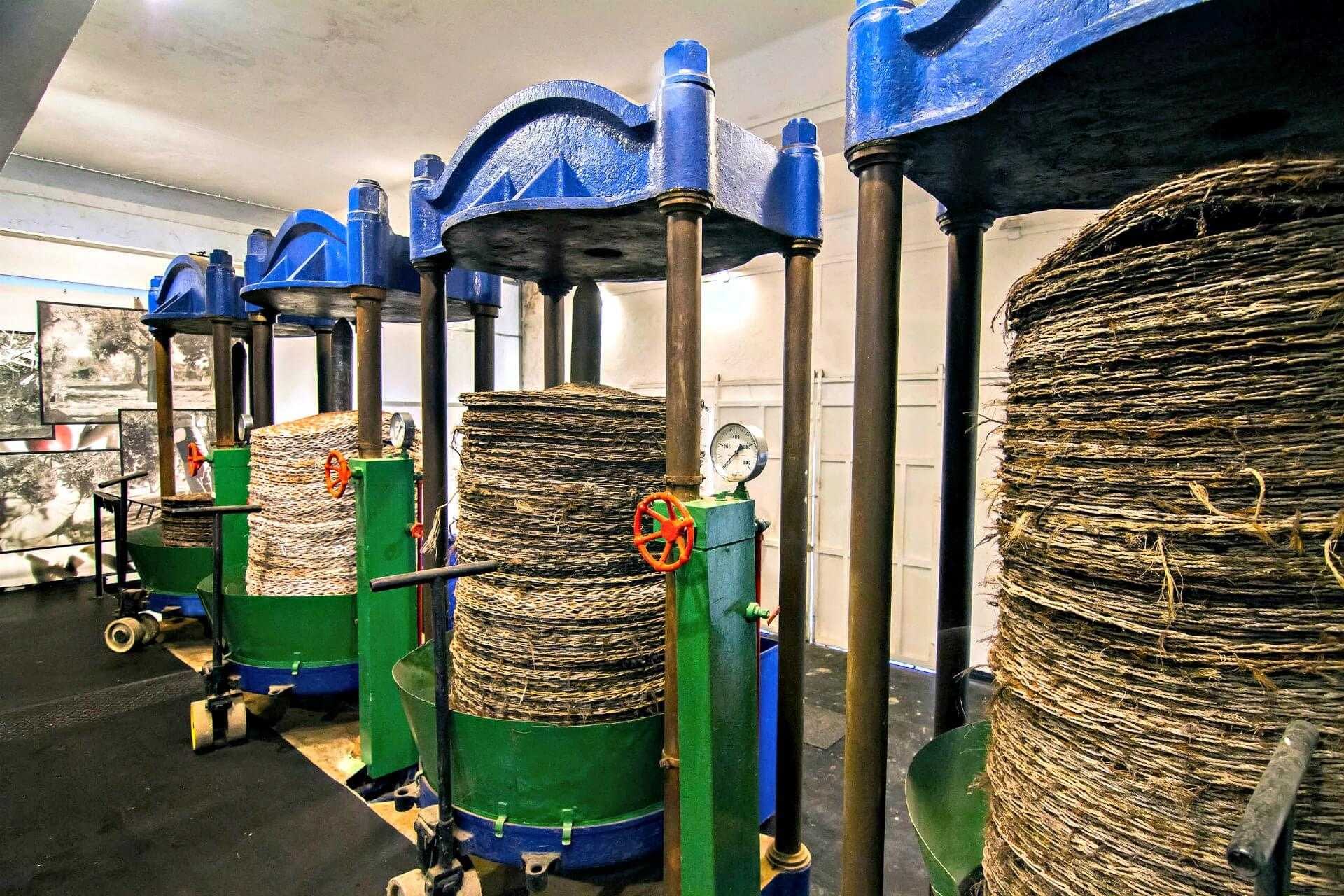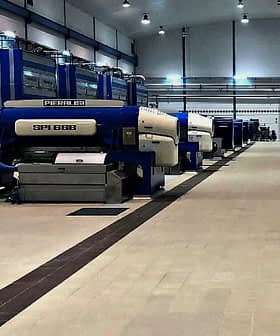Why Some Producers Are Not Ready to Give Up Their Traditional Presses
Inefficient and difficult to maintain, traditional presses are often dismissed as a relic of another era. Olive Oil Times found some producers who say they are not about to abandon their old presses anytime soon.
 Olio Roi
Olio RoiOlive oil mills are becoming more modern and increasingly automated. The gleaming stainless steel and rows of buttons are a testament to the effect that investment and research have had on turning fruit into oil. Traditional presses are often characterized as an anachronistic, uneconomic way of making olive oil.
There is a tendency to look for the bitter and pungent oils that stand out in competitions, but it’s entirely possible that this comes full circle, and we see a return to lighter, fruitier oils that consumers often prefer.
Upgrading equipment and processes can be costly. However, some producers don’t cite costs as the reason they stay with many of the older ways of doing things. Expense doesn’t even factor in their decision.
Given the choice, why on earth might producers still want to make oils in this way? A small band of quality-oriented estates across Greece, Italy and Tunisia’s response is that using presses produces oils of greater individuality, maintains a link to tradition, and best expresses their olives’ characteristics.
When centrifugal decanters were introduced in the 1960s, becoming progressively more refined over the following years, the benefits were clear. Centrifuges spin the olive paste at high speed in a horizontal or vertical drum before separating the oil, water and waste.
Combined with similarly modern crushing methods as olives entered the mill, such as hammer mills, centrifuges made producing olive oil more efficient. They also made the process continuous; in other words, there was no need to stop while the equipment was re-stacked. You keep pouring olives in, you keep getting oil out.
Franco Boeri Roi of Olio Roi, a farm that has around 10,000 Taggiasca trees near Imperia in Liguria, Italy, was not about to dispute the disadvantages of working with presses. His mill, which produces oil sold to the likes of Eataly and Zingerman’s in the US, as well as in other countries, has both a modern, continuous line and a more traditional, discontinuous line with granite millstones and hydraulic presses. “The time and care you need to give to cleaning, labor costs and the space needed are big drawbacks,” admitted Roi.

Olio Roi
Over in Greece, Kiara Koutoulakis’ family estate, Koronekes, near Heraklion in Crete makes oil from Koroneiki olives. Like Olio Roi, they make oil using both presses and the continuous, centrifugal method. “The stages of production using presses are the same as the ones in a modern olive mill,” explained Koutoulakis, “but right after the malaxation, the paste is poured onto stainless steel discs which are stacked one by one until a full press of 80 – 100 discs is ready.” While the discs are stacked, the run-off of oil from the paste is collected and bottled under the estate’s Fleur d’Huile label before the oil from the pressing itself is collected for its other brand.
“Unlike the blasted oils made with centrifugal extraction methods, the olive juice gently seeps out of the paste and most of the volatile and delicate aromas, flavors and polyphenols are preserved,” Koutoulakis said. She added, “When we taste the centrifugally-extracted oils we make in another olive mill in the village, it is clear that the pressed oils have more aromas and flavors.”
Roi also agrees that different processing methods give different oils: “With the traditional method, you get an oil that is sweeter and richer with notes of hazelnut and pine nuts; with the continuous method, you get more green fruit, and a thinner mouthfeel with grassy notes of olives, artichoke and green apple.”
Most people would agree that diversity in styles of olive oil is a good thing. But there is also something more intangible and difficult to capture about using presses, which seems to render modern mills if not exactly boring in comparison, then certainly less exciting places to be at harvest time.
Abdelmajid Mahjoub of Les Moulins Mahjoub, a Tunisian estate near Tunis that supplies oil to the bakery chain Le Pain Quotidien, still uses presses. “My attachment is ancient, and a symbol,” he said. “There is a strange intensity of passion and an immense talent in processing olives traditionally. The modern process is humiliating for the oil master and seems to be a little debatable. It sterilizes us. The classic process reflects the soul of the olive tree most wonderfully.”.

Yacine Amor, who distributes the estate’s products in the UK through The Artisan Olive Oil Company, describes the impact of watching a traditional mill in action: “I visit their farm on every trip to Tunisia. It is a very special experience where tradition and experience come together and the machines seem almost secondary.”
Back in Crete, Koutoulakis echoed Mahjoub’s contention that making oils with presses requires a lot more from the miller, not least the technical demands: “There are a lot of parameters to keep in mind such as malaxation time, the room temperature when the discs are stacked with the paste, the stacking of the discs in record time to avoid oxidation, the timing of the press…then the natural decantation process and the skimming process.” All this, she said, “is a labor of love.”
So, what does the future hold for oils made this way and their declining number of producers? Roi, for one, strikes an optimistic note by suggesting we might take a look at a trend in another industry. “If you look at what’s happening in wine, there is a move away from all those wines matured in oak that tasted the same, and a return to more traditional tastes and vinification,” Roi suggested.
Something similar could eventually take place in olive oil, with a shift towards styles that favor more traditional methods: “In oil now there is a tendency to look for the bitter and pungent oils that stand out in competitions, but it’s entirely possible that this comes full circle, and we see a return to lighter, fruitier oils that consumers often prefer.”





